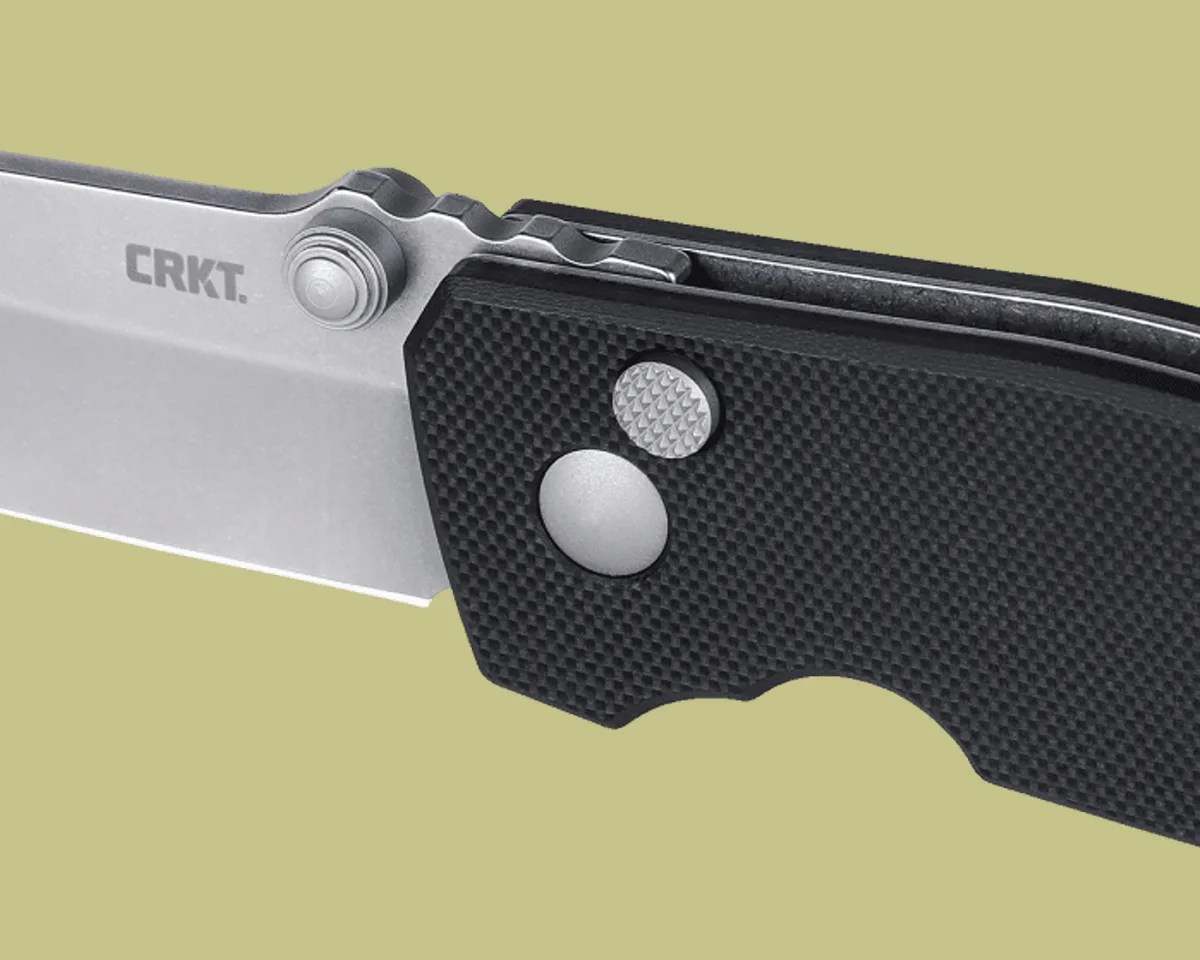Numerous proprietary designs — meaning they are the sole property of a particular brand or designer — have also emerged over the years. Spyderco’s legendary Compression lock, for instance, combines the concepts of a liner lock and a back lock and is, as a result, stronger and more reliable than either.
However, Spyderco’s Compression Lock technology patent expired in 2021. While the brand still owns the name, other makers and designers can now utilize the technology. This likely led to the recent influx of button-lock knives, which typically rely on the same overall concept as the Compression Lock.

How button locks work
Just as Spyderco’s Compression Lock borrowed from and capitalized on Michael Walker’s liner lock, button locks (less commonly known as plunge locks) borrowed from and capitalized on the Compression Lock. Furthermore, the way they function is both remarkably simple and impressively ingenious.
When a button-lock knife is opened, a small piece of metal (sometimes called a tensioner) — such as a springed liner (as in the Compression Lock), a tensioned bar or another piece — slots into place at the base of the deployed blade. This small, strong piece of metal exerts a force on the blade, utilizing pressure to keep it from folding back into the handle.

